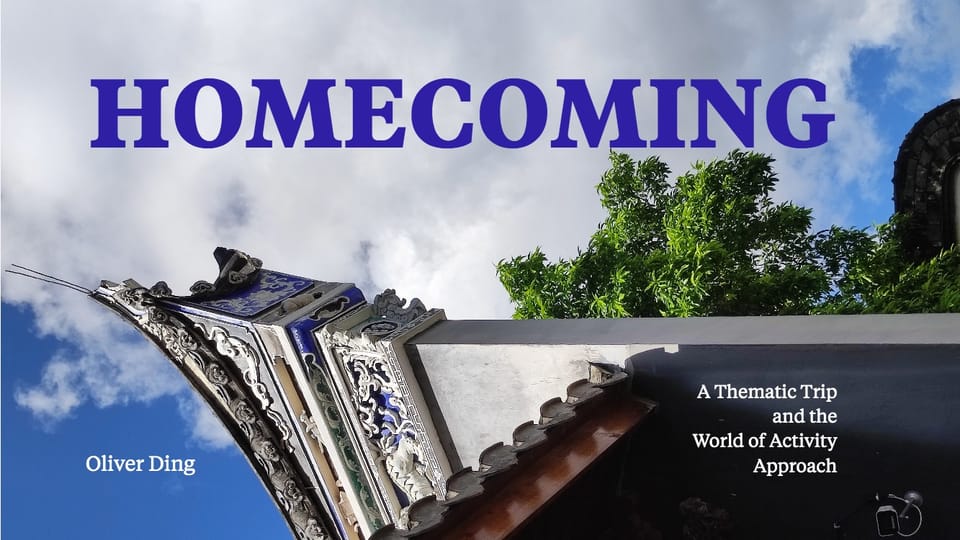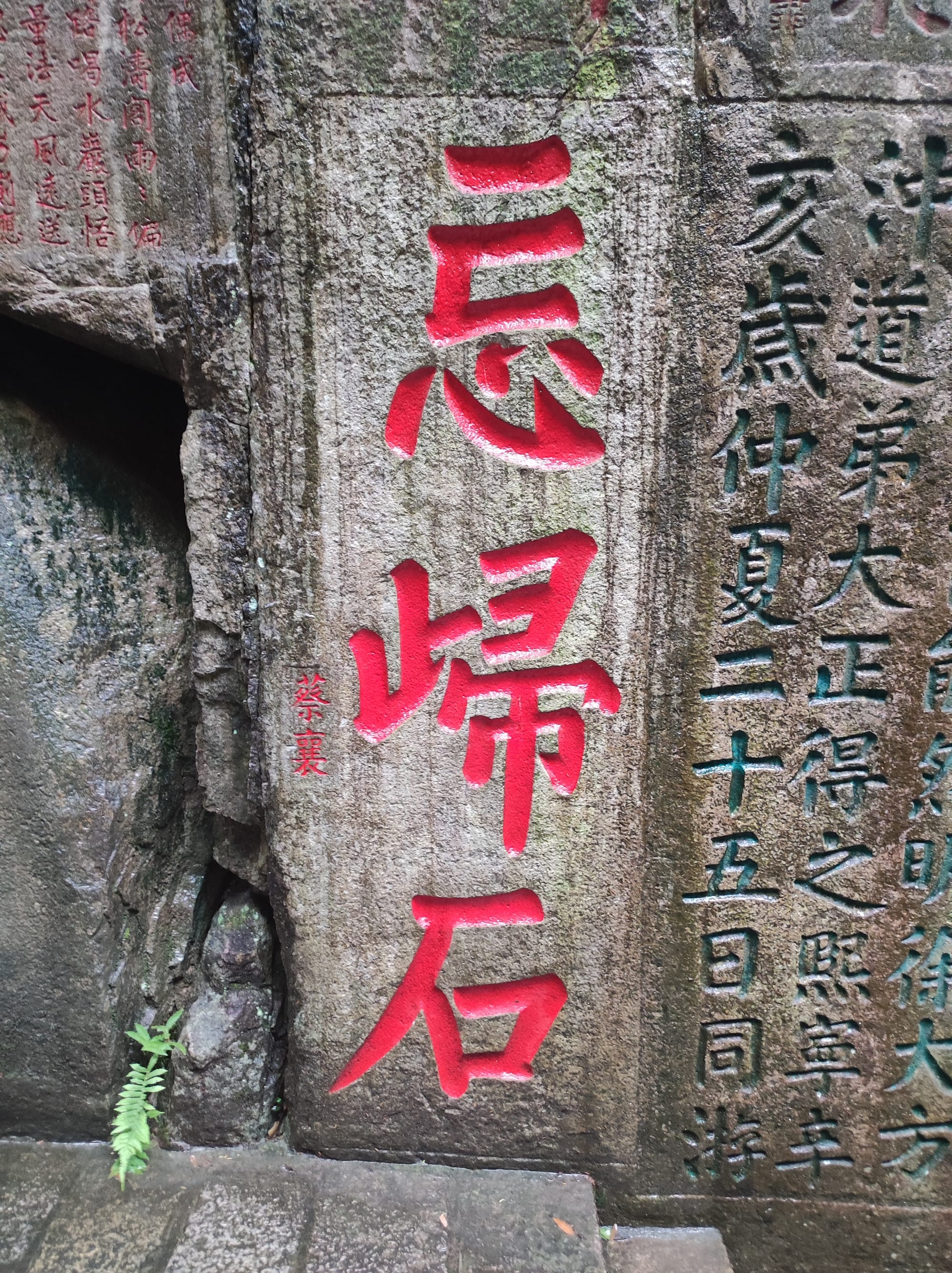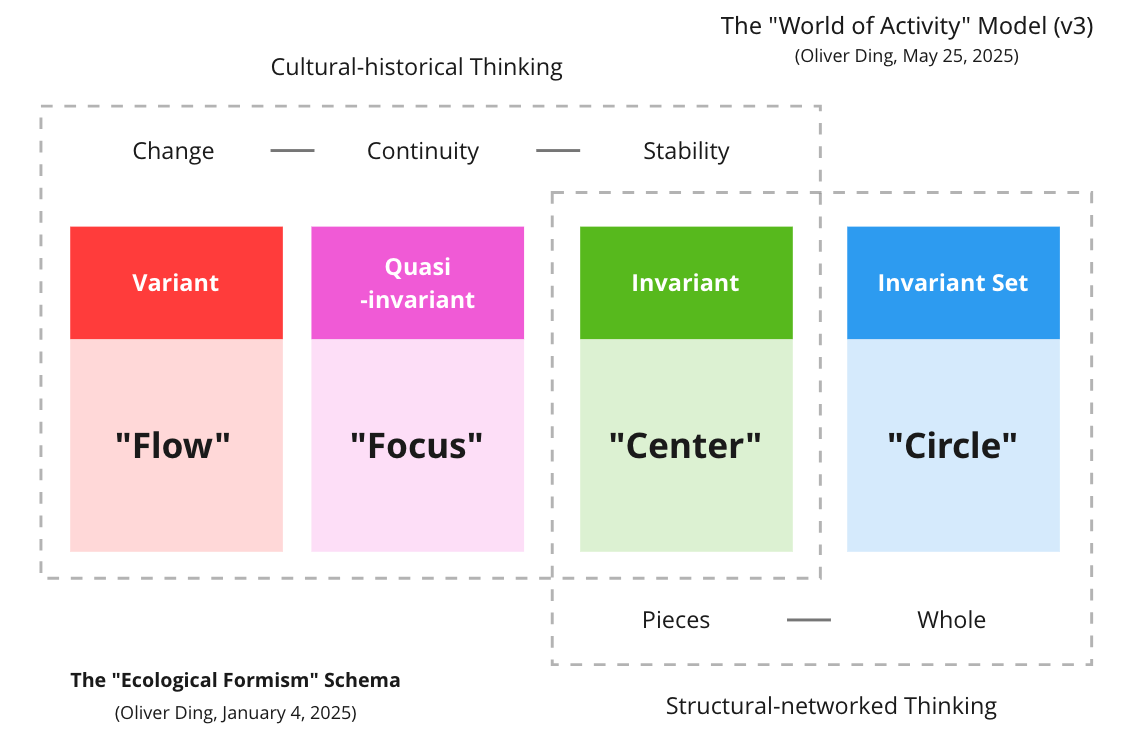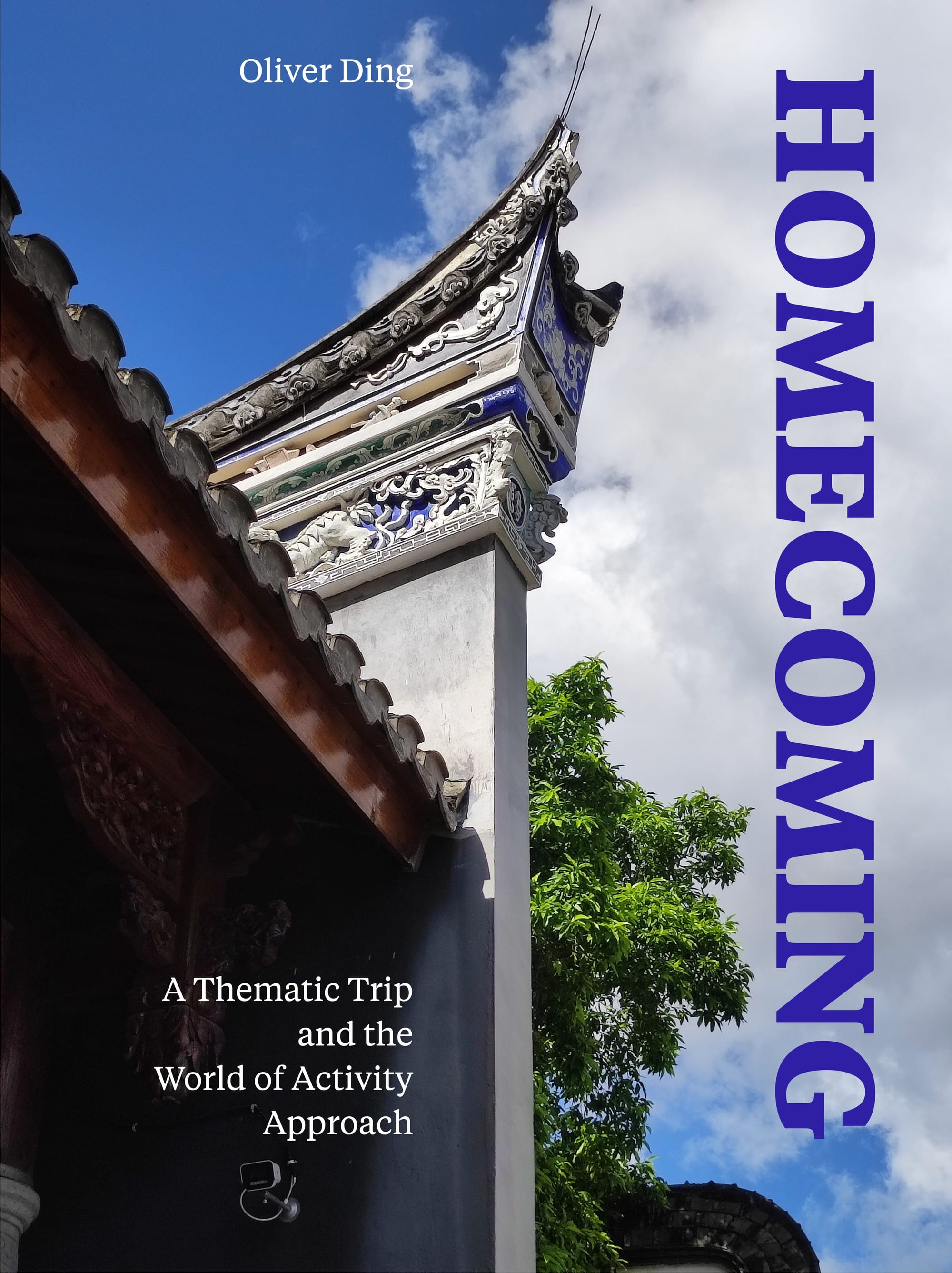Homecoming: A Thematic Trip and the World of Activity Approach

by Oliver Ding
My first Kindle book was released on September 7, 2025. My recent trip to Fuzhou, China, inspired it.
From late June to July 2025, I traveled to China, spending most of my time in Fuzhou, also known as Foochow. Before moving to the U.S., I had lived in Fuzhou for nearly 20 years. This journey became a deeply meaningful re-engagement with familiar places, old friends, and the memories that had shaped my earlier life.
At the beginning of the trip, I revisited Wuyi Mountain, searching for a symbolic object that had inspired my son Peiphen’s name. This moment led me to re-read my 2015 autobiography, A Freesoul.
More specifically, I reunited with an old friend from Beijing, and together we explored the city. One of my classmates served as our guide. In this process, I rediscovered his deep knowledge of local culture and his refined character.

Immersed in this rich experiential context, I began connecting the World of Activity approach with my situational experiences.
In my recent creative Flow, the theme of World of Activity has become a significant Focus. In June 2025, I formally detached the theme from the Creative Course Framework and redefined World of Activity as a general term for further theoretical development. From the perspective of the Ecological Practice Approach, “World of Activity” is understood as a broad life container — a space in which we can observe the structure and developmental patterns of life activities. It also functions as a thematic space where related knowledge elements can be curated together.
The World of Activity approach provides a lens through which we can examine human experience across multiple temporal and spatial scales, utilizing a series of knowledge frameworks.
While in Fuzhou, I mainly used the World of Activity model, also known as the “Flow — Focus — Center — Circle” schema, to reflect on my 2015 autobiography.

I discovered several distinct forms of “World of Activity,” corresponding to different developmental stages of life.
- Hometown: Primordial Situatedness @ World of Activity
- Alien Land: Geographical Expansion @ World of Activity
- Domain: Professional Development @ World of Activity
- Internet: Digital Engagement @ World of Activity
- Foreign Land: Cultural Reconstruction @ World of Activity
Later, I detached my mental focus from the past and attached it to the present. When staying at Fuzhou, I had opportunities to meet with old classmates and friends. We had wonderful conversations and exciting tours around the city.
Paying attention to the present brought new insights to me. Eventually, I discovered two more forms of the World of Activity.
- Inheritance: Generative Anticipation @ World of Activity
- Homecoming: Spatio-temporal Emergence of the World of Activity
Each form represents not merely a change of location or circumstance, but a fundamental reorganization of how the World of Activity structures itself — its boundaries, centers, and internal dynamics.
I continued writing daily notes to deepen the theory-practice connection. By the end of the trip, I had written 138,352 words in Chinese. Combined with the original 2015 autobiography, the total came to nearly 211,145 words. The newest version, v2.1, is about 217,665 words.
I edited it as a new Chinese book draft titled Freesous in Fuzhou: Theme, Enterprise, and World of Activity.
Unfortunately, the original was written in Chinese. After returning to the U.S., I started rewriting it in English. The result is this English book: Homecoming: A Thematic Trip and the World of Activity Approach.

While most materials are based on my Chinese notes, the English book is not a translation of the Chinese book draft. For example, in the Chinese one, it has six parts, and I wrote notes on the World of Activity approach, and relevant ideas such as the Social Form framework, the Thematic Enterprise framework, and the Strategic Agency framework. In the English one, I focus on the trip itself and the World of Activity approach. Other topics will be explored in other future books.
Homecoming is more than a memoir. It is both a personal narrative and a theoretical contribution, showing how everyday experience can become a source of cultural insight, creative frameworks, and intergenerational connection.
This book is about Self, Life, and Mind.
The major part of the book investigates my 2015 autobiography using the “Flow — Focus — Center — Circle” schema, also known as the World of Activity model. It is a book about how the 2025 “I” employs theory-based reflection to reflect on the practice-based reflection that the 2015 “I” made about my past self. This experience of biographical engagement has been extraordinary! I hope this book can share both my method and the joy I discovered in it, encouraging you to embark on your own journey of biographical engagement.
As Chinese historian Qian Mu once said, what we cannot forget is our real life (note 1). This homecoming trip proved to be a perfect voyage — I was fortunate to reconnect with people, events, and places I had been unable to forget over the years. Those individuals, experiences, and locations I recorded in my autobiography ten years ago were, naturally, among the unforgettable elements of my life. Due to time constraints, however, this creative work based on the journey remains imperfect. The fourth section of the original Chinese manuscript, concerning the evolution of social forms, was left incomplete. Yet this imperfection is an indispensable part of life itself.
Inspired by ecological psychology, activity theory, and phenomenological sociology, I approach Mind from an ecological perspective, integrating thinking with doing. This trip involved mental movements across multilayered spatial trajectories and temporal dimensions — reflecting, interpreting, and connecting life experiences across different scales of time and space.
Note:
- 钱穆说,[忘不了的人和事,才是真生活]。
